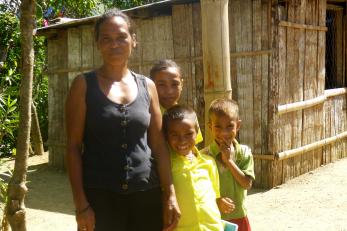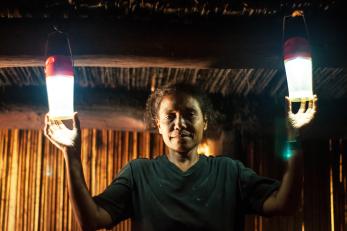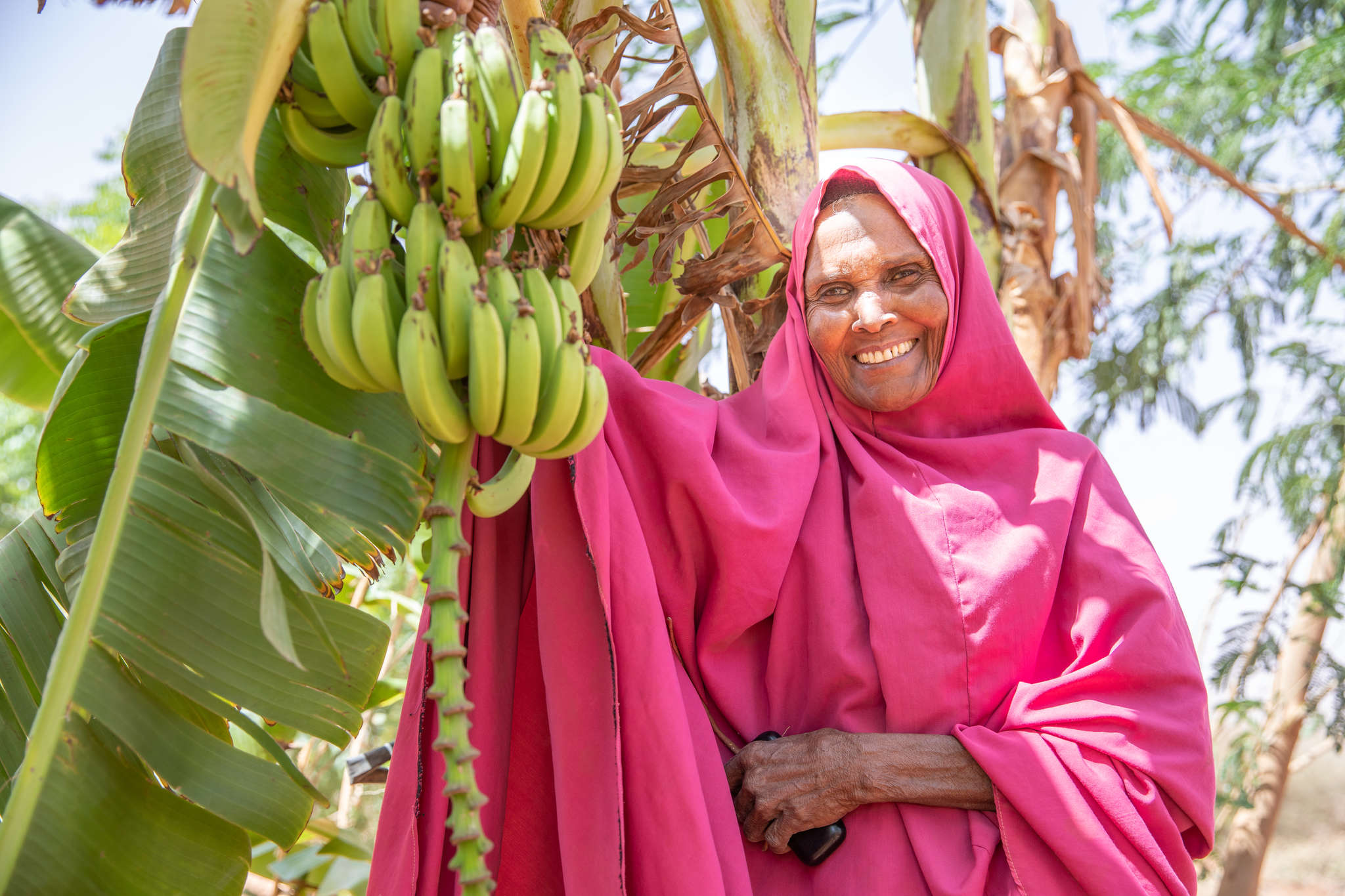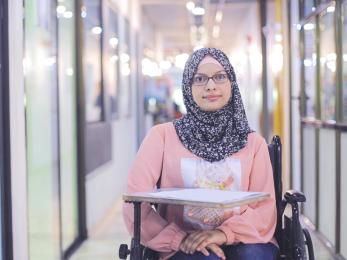Solar energy lights the way for rural families

Celeste da Silva and her husband Clementino grinned broadly as they held up the recent addition to their modest tin-roofed home in Soru, a hamlet clinging to a ridge in the soaring mountains of Ainaro District in Timor-Leste. The source of their contentment? A simple solar light they recently purchased from their local store, Loja Sahabat.
It’s a small change that’s had a real impact on the quality of their family life.
Majority of families have no access to electricity
Thousands of families like the da Silvas live without access to electricity in Timor-Leste. As many as 65 percent of the country’s population live off the grid. The decades-long struggle to gain freedom from occupation destroyed much of the small island nation’s infrastructure, and even eleven years since gaining independence, development has been sluggish.
Until recently, families could only use expensive kerosene or candles to light their homes. But as part of Mercy Corps’ Energy for All project, affordable solar lamps are reaching local stores in even the most remote communities, helping families like the da Silvas save time, money and their health.
Solar energy makes life easier and healthier
Relieved to escape the unforgiving midday glare, I perched myself on a low bench inside the cool gloom of the family’s wooden house. Clementino explained that by replacing the family’s nightly reliance on kerosene lamps and candles, their solar light means they no longer need to endure the regular two-hour walk on a steep rough road to purchase kerosene, or the inconvenience of an extinguished lamp or candle on windy nights.
Nor do they suffer the chest problems associated with kerosene’s dirty smoke or awake with sooty, blackened faces. “Since we bought the solar light my husband and kids don’t have tight chests like before — or have to wash the soot from kerosene smoke off their faces when they wake up,” Celeste told me.
Impact radiates to neighbors and the next generation
However, as she further explained over the din of boisterous children and roosters in her yard, it is the financial benefits of their solar light that has really made the biggest difference for their household. By saving the money they previously had to spend on kerosene, they have relieved a huge burden on their meager household income from Clementino’s part-time job as a security guard.
Indeed, since they bought the light just six weeks ago, Clementino assured us they have already recuperated the light’s cost in savings — a claim supported by an exuberant cheer from his young daughter.

After the children in their bright yellow shirts dashed off to their rural school for afternoon lessons, their parents explained that the kids’ enthusiasm for the light also stems from the fact that they are one of the chief users of the lamp on school day evenings. They’re now able to do their schoolwork without straining their eyes and sitting beside a smoky dim light like they did before the Mercy Corps program made solar technology available.
Celeste proudly told us that her neighbors are also benefiting from their purchase, now regularly visiting in the evening hours while they save enough money to purchase their own solar light.
About Energy for All
Recognizing that energy poverty is a major contributor to Timor-Leste's overall poverty cycle, Mercy Corps is helping local partners produce and distribute solar lamps and fuel-efficient stoves that both improve lives for families and relieve the burden on natural resources.
Where the majority of the population does not have access to electricity, current energy sources like kerosene and unsustainably harvested wood carry health risks and deplete the environment. They are also expensive and time-intensive, draining limited incomes and efforts that could otherwise be invested in livelihoods or education.
More than 20,000 people will benefit from new supply chains and businesses who are making affordable, clean energy technologies available for the first time. The Energy for All program aims to create a new, sustainable energy economy that benefits even more families and educates communities about improved natural resource management for the long-term.

